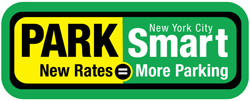There are 3-4 parking spaces per car in the United States which means 66-75% of spaces will be empty at any given time
Parking lots can be deadly to downtown areas
- people don't have to walk drive or walk thru the city to find parking, businesses are not patronized
Money should not be wasted on infrastructure that is unnecessary
Case Studies
Jackson Heights and Park Slope, New York
The neighborhoods are similar, but Park Slope is wealthier and has more cars available, yet Jackson Heights residents are more likely to drive to work in Manhattan
 SFpark - parking technology + flexible pricing = better parking
SFpark - parking technology + flexible pricing = better parking
Essentially parking prices can be different on each block and around every corner
Technology to capture data and measure performance
Best Practices
Stop asking how much is enough parking?Where do minimum parking requirements come from?
Tailor parking requirements
Parking demand varies based on density
Supply and demand
Incorporate maximums ineradicable of minimum
Stop using the requirements that don't make sense for your city
Manage on-street parking
Meters
Do away with time maximums
Remember:
- Acknowledge value of curbs
- Balance rates and demand
- Remove time limits
- Keep revenue local
- Signage
- Street furniture
- Street sweeping
*Notes from an APA Conference session

No comments:
Post a Comment